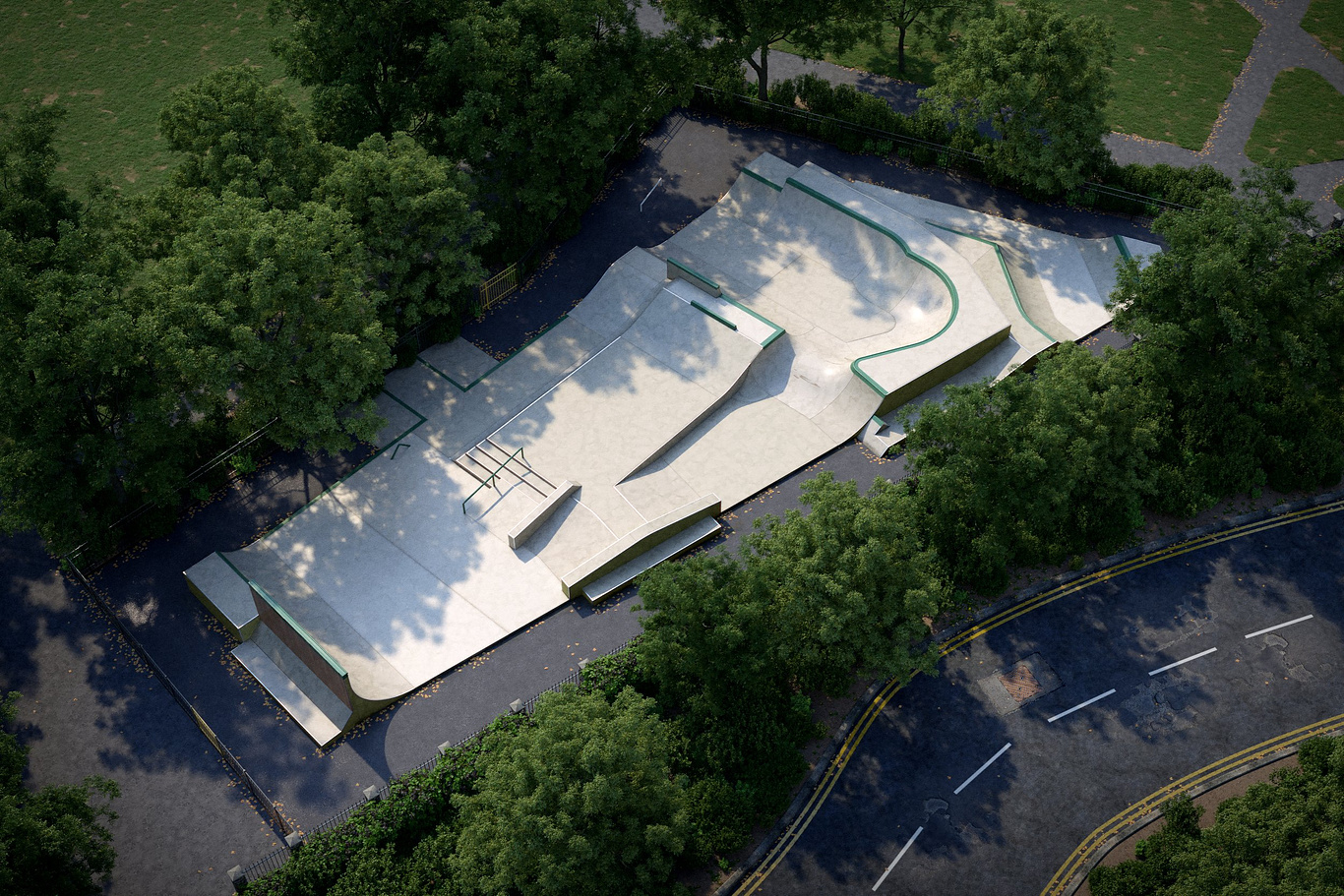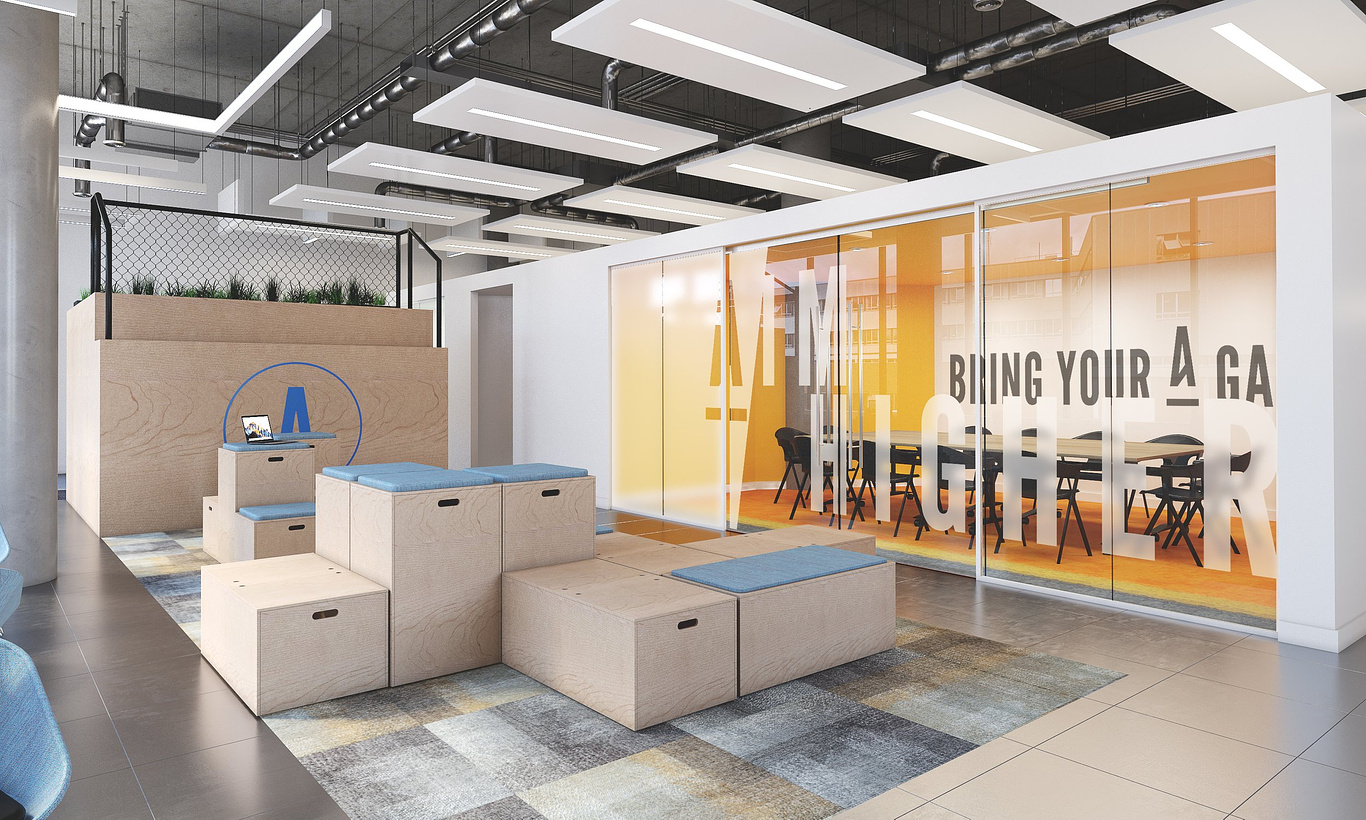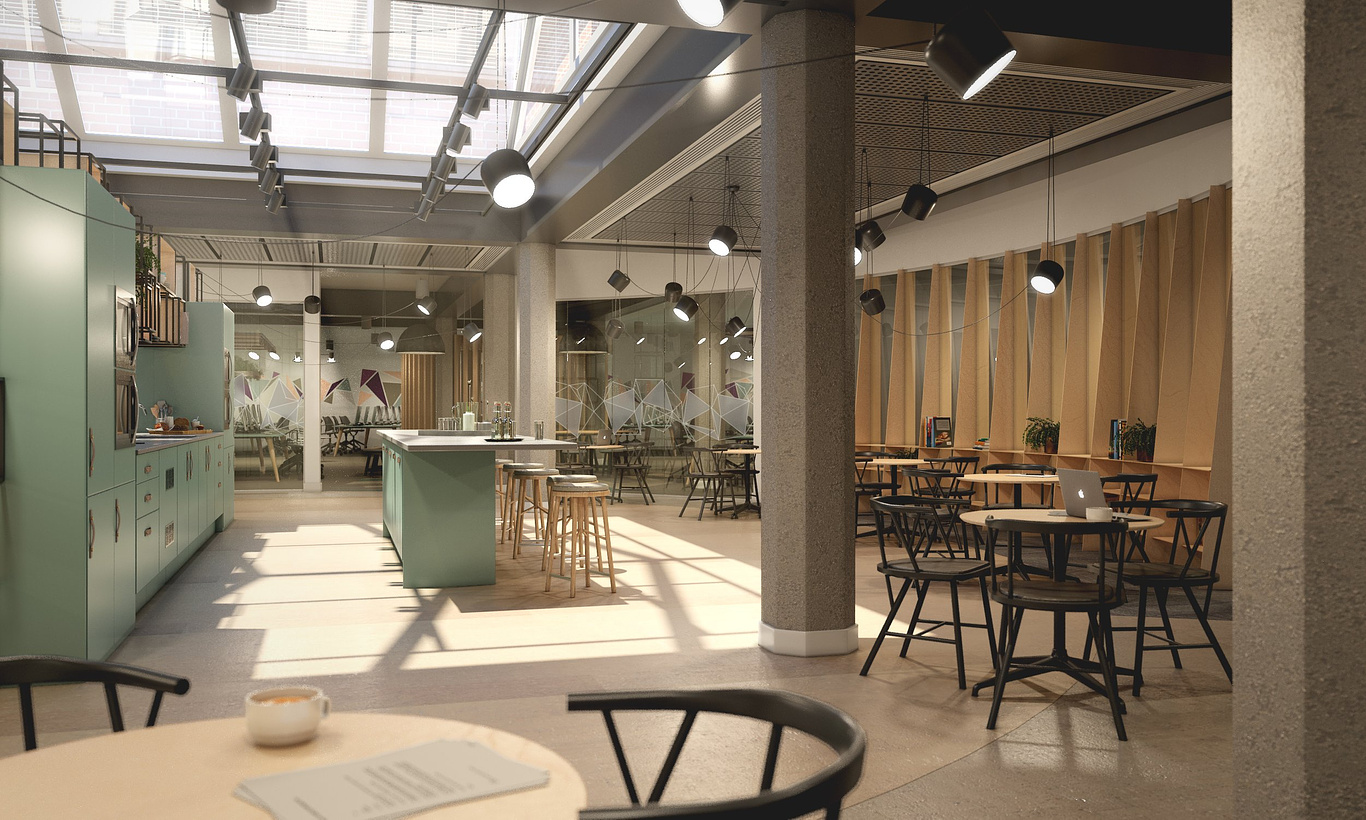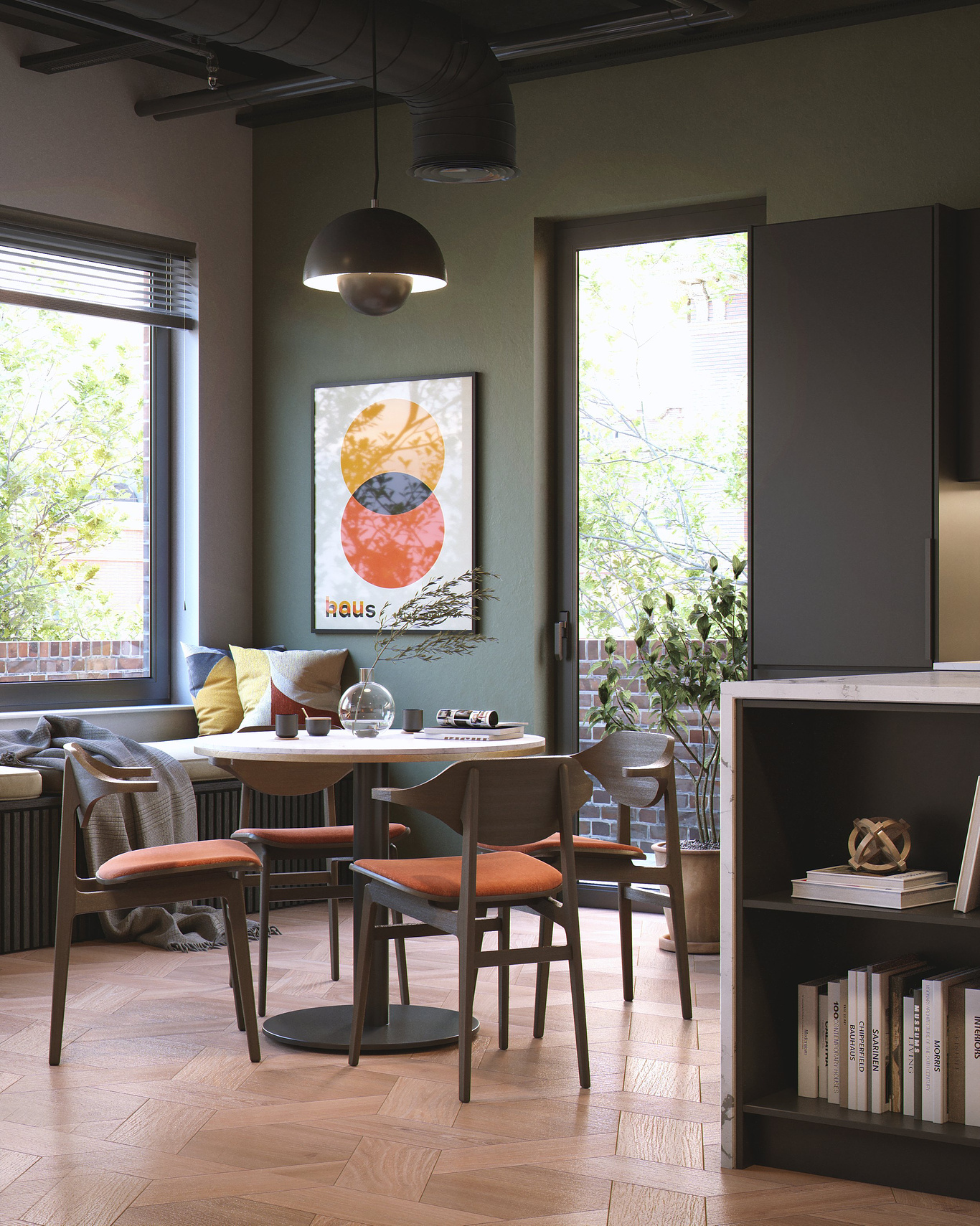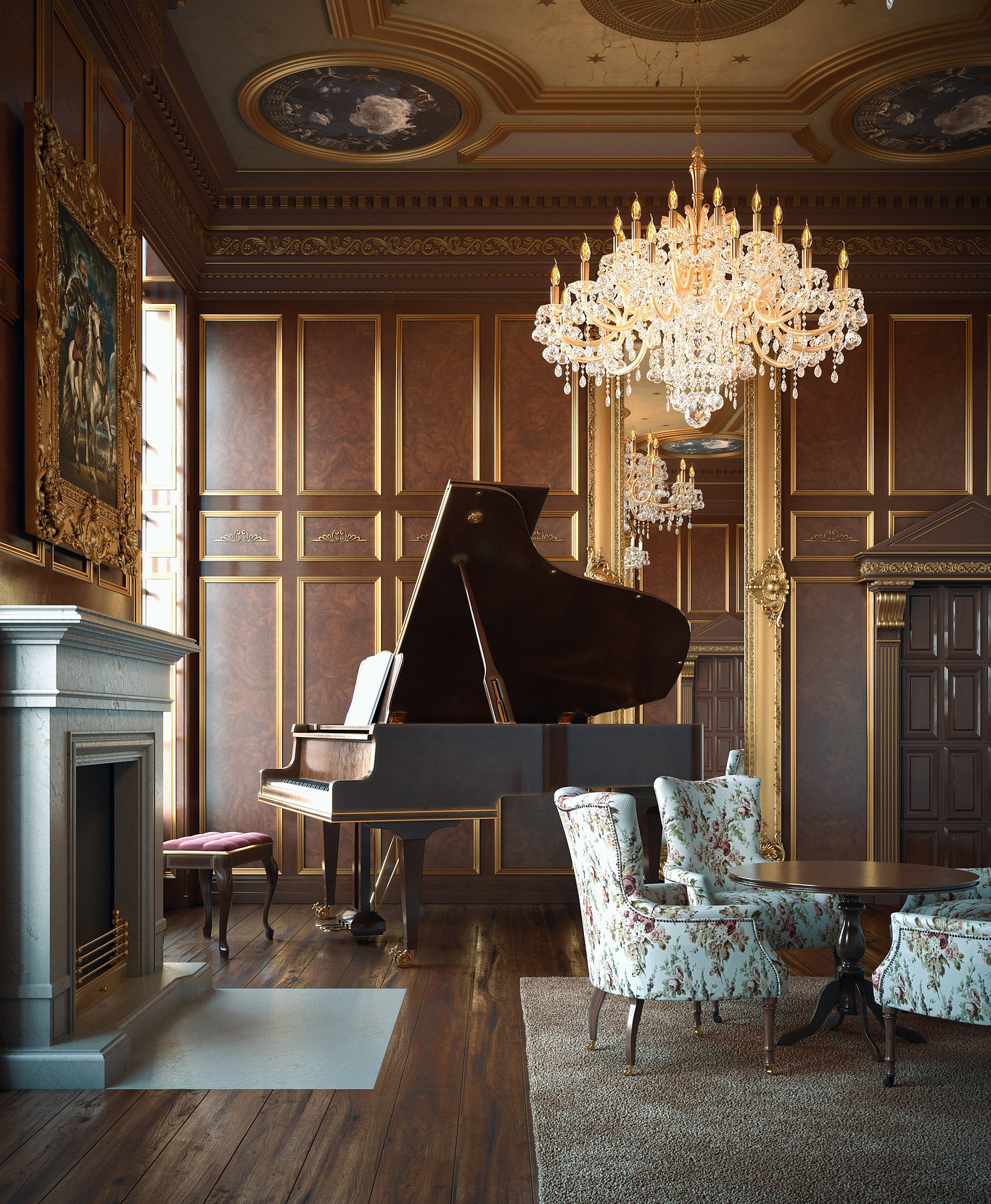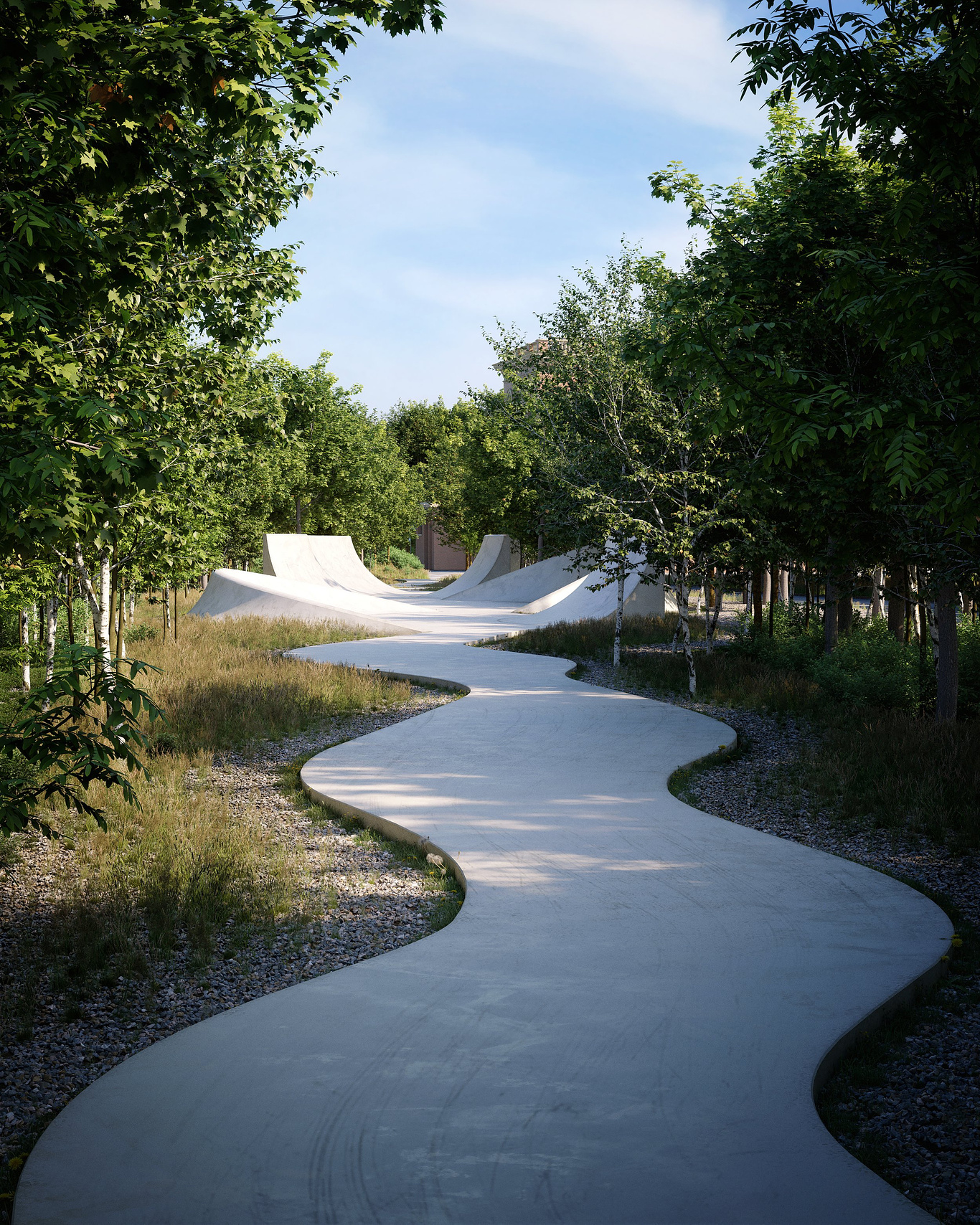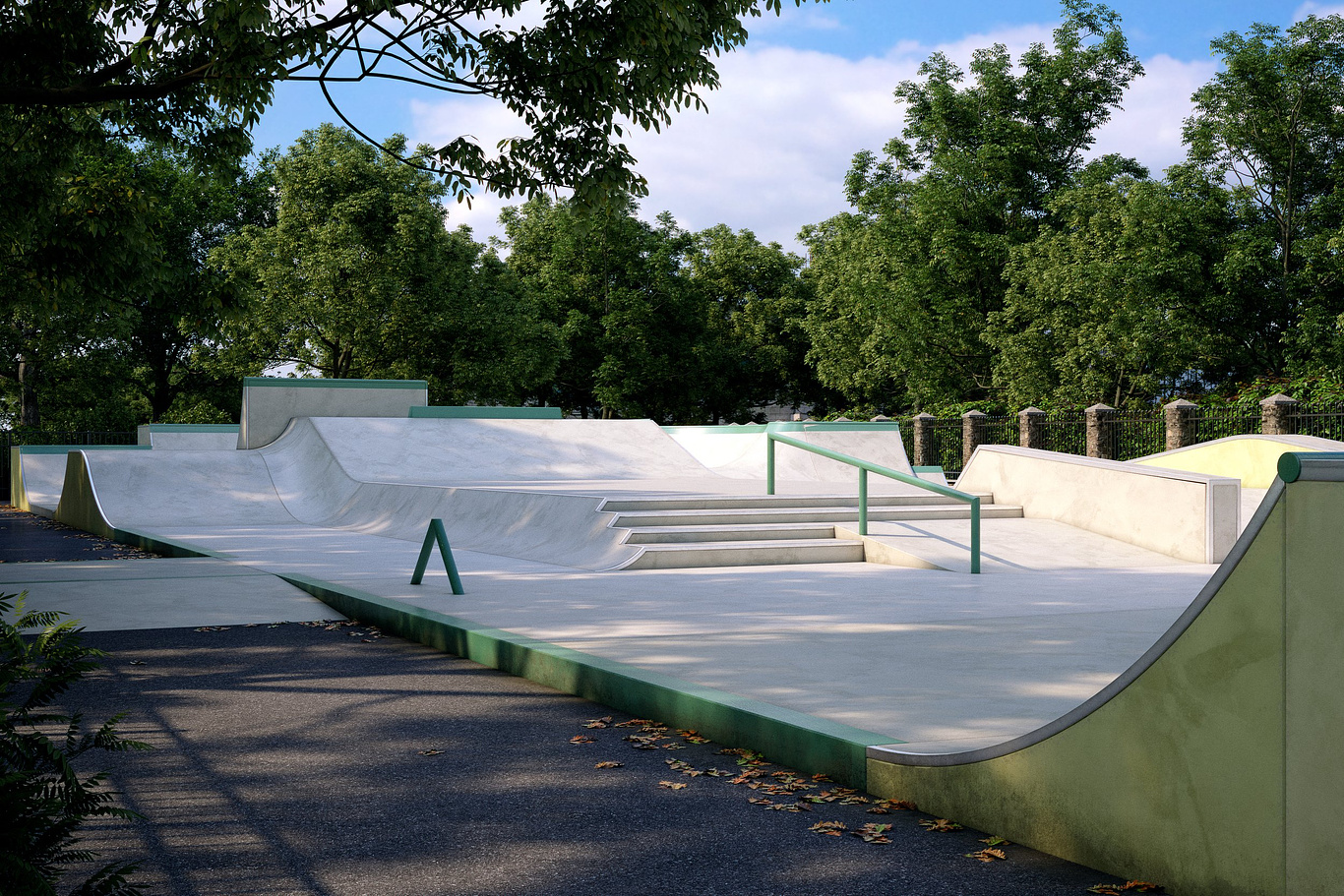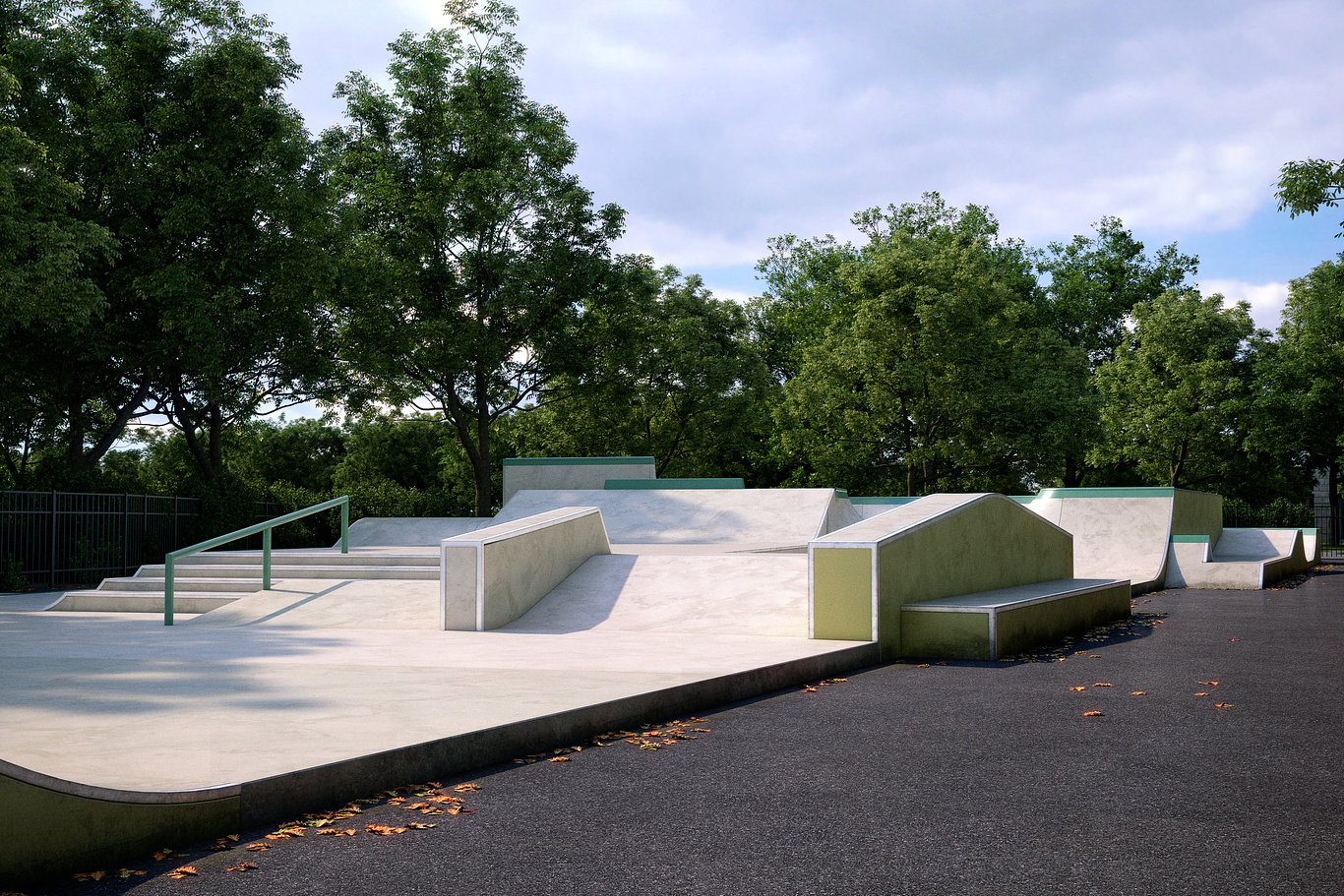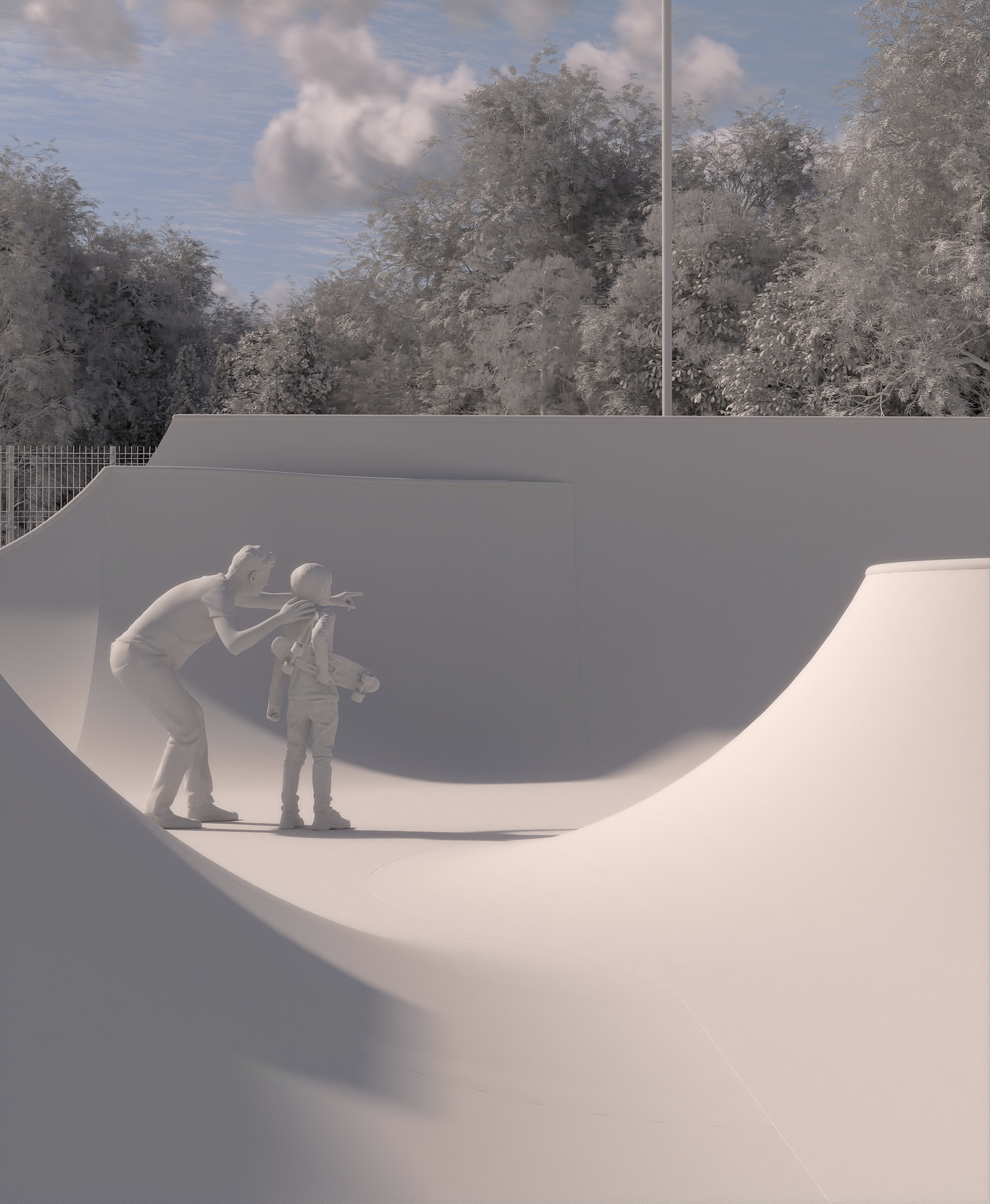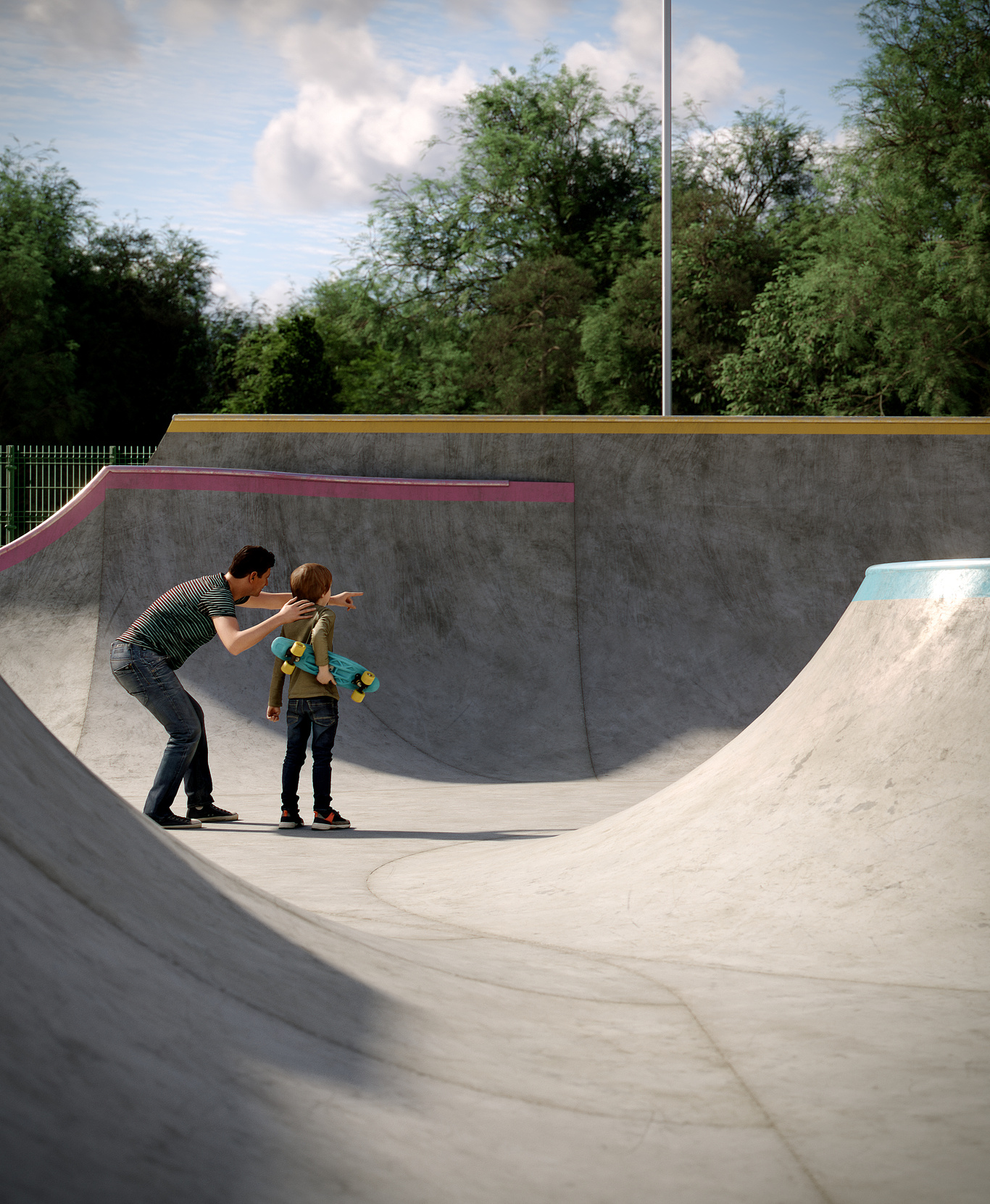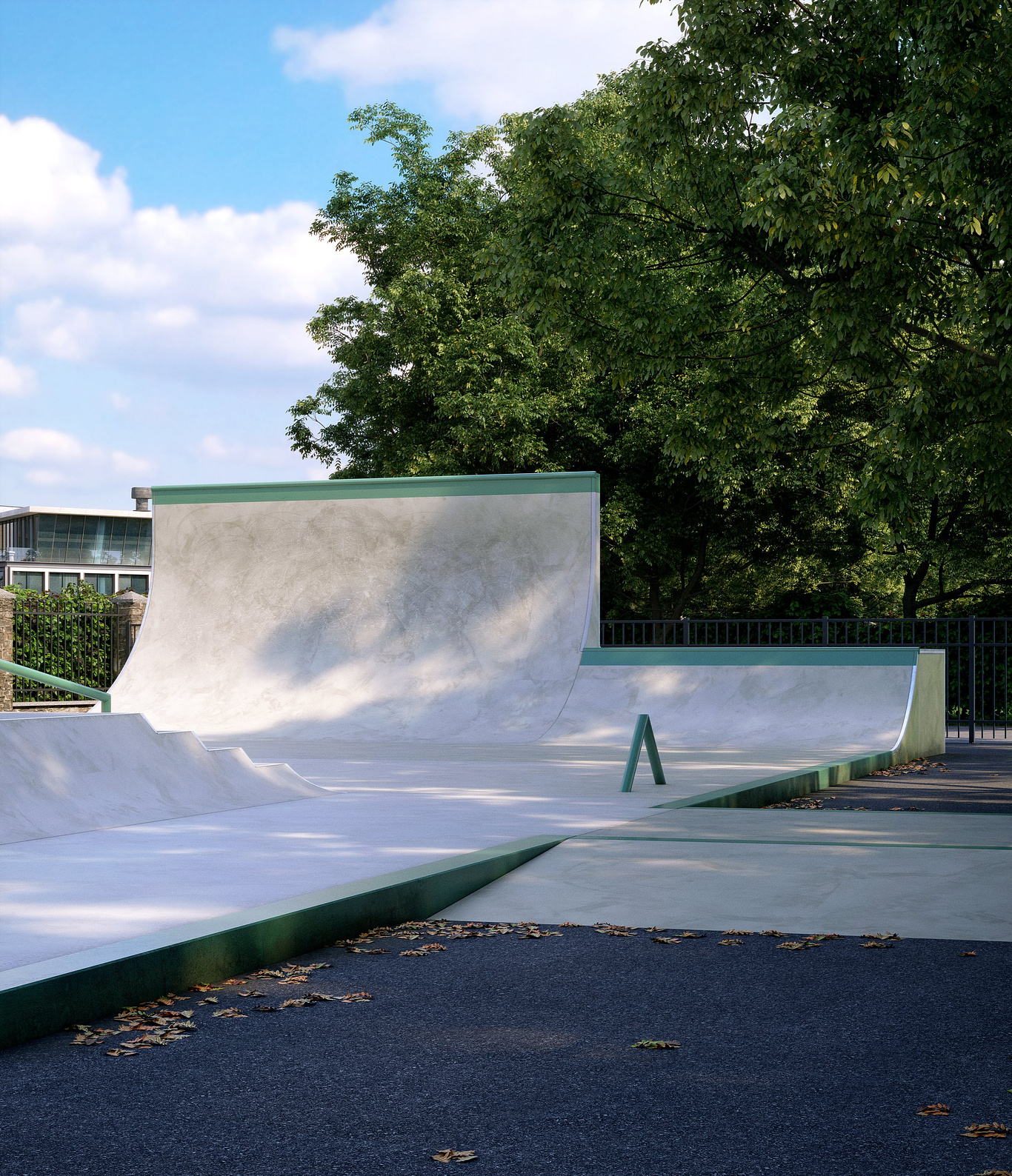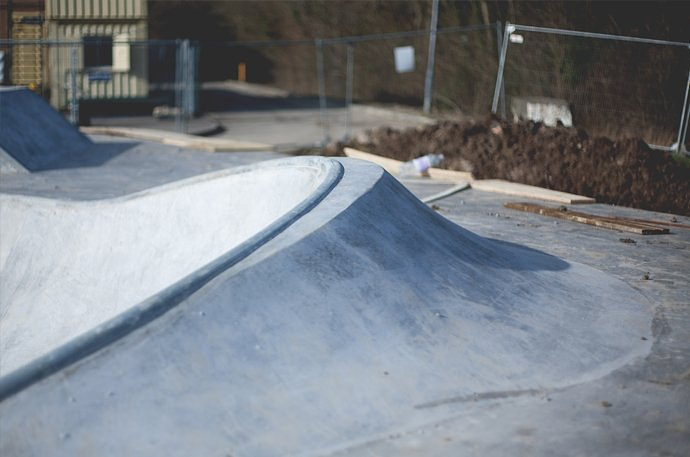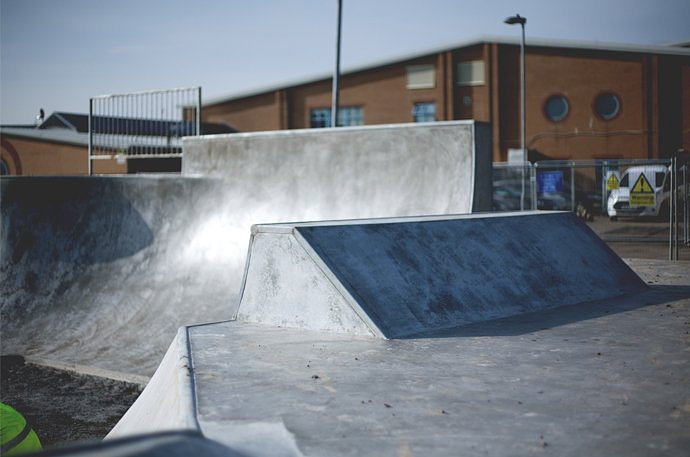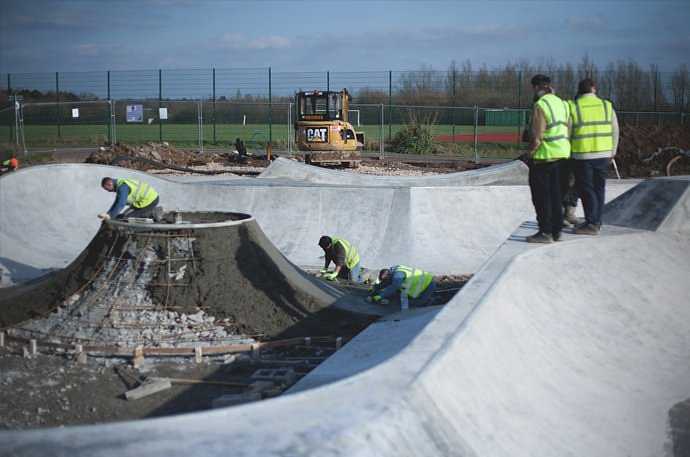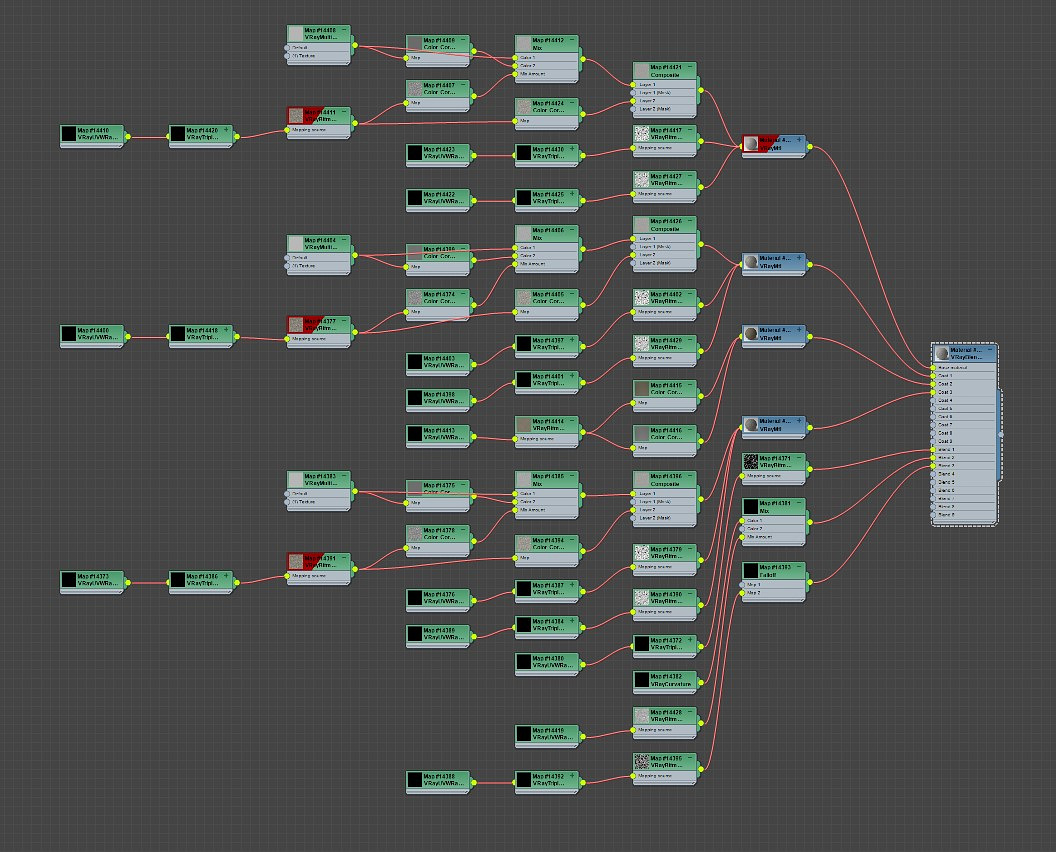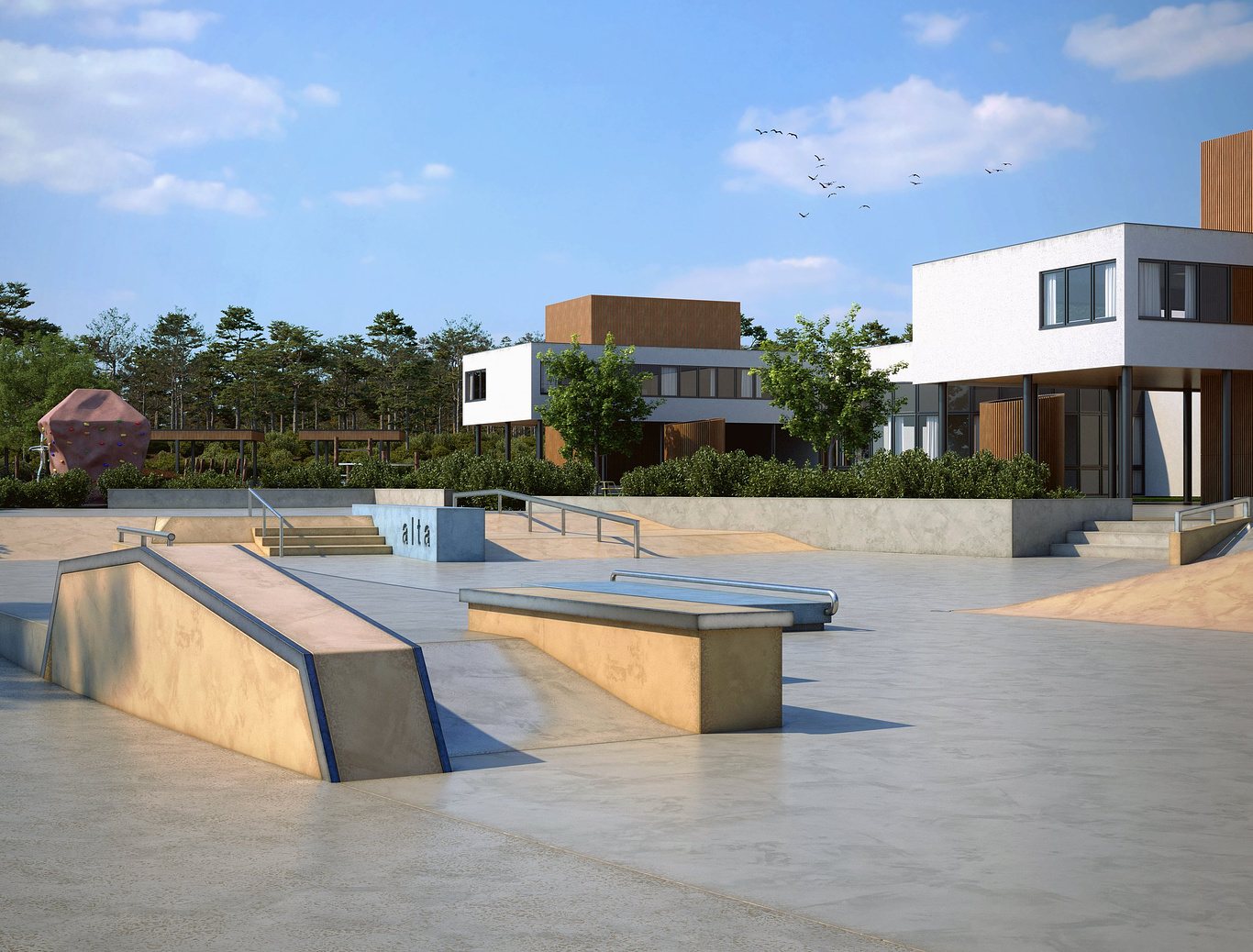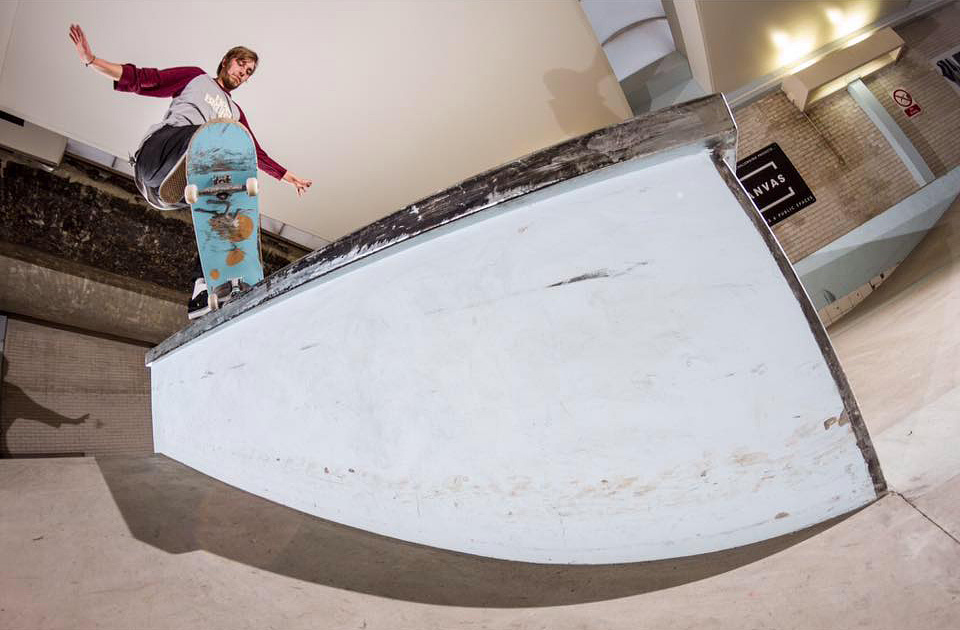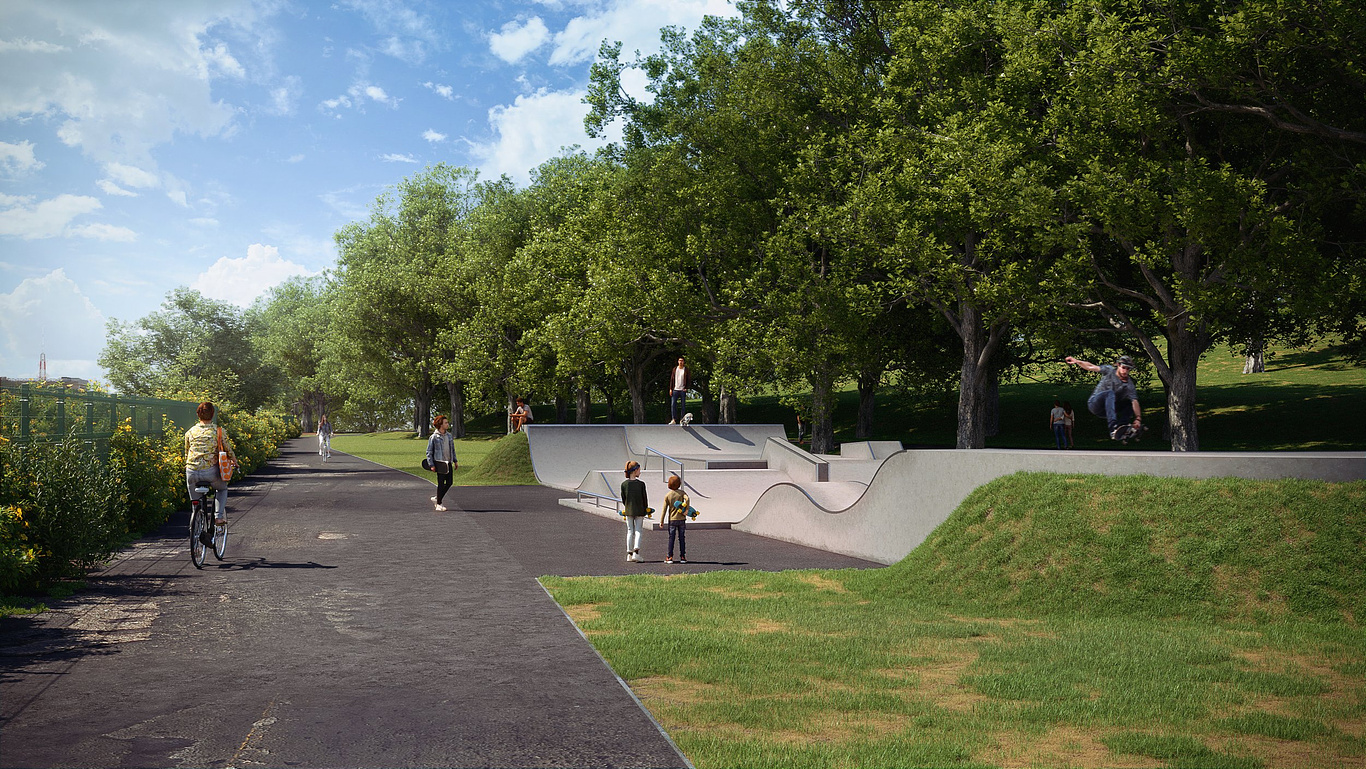
Interviews
What's the trick to rendering amazing skateparks?
Freelance 3D artist and skateboarder Matt Wootton shares his top tips and tricks for visualizing skatepark designs.
Meet Matt Wootton, a freelance architectural visualizer and 3D artist living in Bristol, UK. With over a decade of architecture and construction experience, Matt specializes in small-scale architectural projects such as custom houses, interiors, small commercial developments, and skateparks.
Skateboarding has been a big part of Matt's life for almost 20 years, and he's an advocate for the physical, mental, and social benefits that skateboarding and other action sports have on our society and culture. Matt now applies his unique skill set as a skateboarder and architectural visualizer to illustrate how skateparks can transform urban environments and have a positive impact on the community.
Skateboarding has been a big part of Matt's life for almost 20 years, and he's an advocate for the physical, mental, and social benefits that skateboarding and other action sports have on our society and culture. Matt now applies his unique skill set as a skateboarder and architectural visualizer to illustrate how skateparks can transform urban environments and have a positive impact on the community.
What drew you to visualization?
Matt: From a young age, I've always been drawn to creative subjects like photography and graphic design. And my dad's an architect, so I’ve always had a special relationship with architecture.
As part of my work experience in school, I tried SketchUp and really liked it. While looking over the shoulders of the visualizers, I thought, “Wow, wouldn’t that be a great job?” So after studying graphic design and photography, I began training as an architectural technician. That's where I learned SketchUp and Rhino, and knew 3D was for me. As much as I enjoyed the creative aspects, I also enjoyed learning something complex and technical. It just made sense to me.
Matt: From a young age, I've always been drawn to creative subjects like photography and graphic design. And my dad's an architect, so I’ve always had a special relationship with architecture.
As part of my work experience in school, I tried SketchUp and really liked it. While looking over the shoulders of the visualizers, I thought, “Wow, wouldn’t that be a great job?” So after studying graphic design and photography, I began training as an architectural technician. That's where I learned SketchUp and Rhino, and knew 3D was for me. As much as I enjoyed the creative aspects, I also enjoyed learning something complex and technical. It just made sense to me.
How did you get started visualizing skateparks?
I actually ended up working for a company that designed and built skateparks, which, as a skateboarder since my early teens, was a dream job! I created construction drawings and 3D models in Rhino, and I learned a lot about how skateparks are designed and constructed. I got to work on some really cool parks.
I actually ended up working for a company that designed and built skateparks, which, as a skateboarder since my early teens, was a dream job! I created construction drawings and 3D models in Rhino, and I learned a lot about how skateparks are designed and constructed. I got to work on some really cool parks.
Unfortunately, after a year or so, the skatepark company downsized, and I needed to look for other work. I ended up doing some basic CAD jobs, which at the time felt a little like a career setback, but instead it gave me an opportunity to learn new tools. In those days, I played video games a lot and wanted to make my own 3D models to share with the game mod community.
In my free time between CAD work, I decided to teach myself 3ds Max. First I started with modeling, and then I moved on to rendering. After learning a bit of V-Ray, I managed to land my next job as a visualizer at an interior design firm. From there, I bounced between working for a studio and working freelance, before deciding that freelance is what’s best for me. It gave me more freedom and control over the kinds of projects that I worked on, such as skateparks.
My passion for skateboarding and skatepark construction hadn’t faded over the years. I still missed it, and I still wanted to use my skills to help promote skatepark projects and show how valuable they can be.
In my free time between CAD work, I decided to teach myself 3ds Max. First I started with modeling, and then I moved on to rendering. After learning a bit of V-Ray, I managed to land my next job as a visualizer at an interior design firm. From there, I bounced between working for a studio and working freelance, before deciding that freelance is what’s best for me. It gave me more freedom and control over the kinds of projects that I worked on, such as skateparks.
My passion for skateboarding and skatepark construction hadn’t faded over the years. I still missed it, and I still wanted to use my skills to help promote skatepark projects and show how valuable they can be.
“Every skatepark begins with a dream. A dream of having a safe space to learn and progress. Skateparks are an asset to the community with a positive impact on the lives of its users. I love helping designers show how skateparks can fit in harmony with their environments and serve communities in a meaningful and lasting way.”
Architecturally, I’ve always found freeform concrete parks to be an interesting subject to work on. I was inspired by the skatepark photography of Amir Zaki, and I thought it would be great to photograph skateparks virtually. So I started working on some of my old skatepark projects from the files I had lying around. Then I got back in touch with some of my old contacts, and it’s grown from there.
Can you walk us through the process of creating one of your images?
Because most skateparks are designed in 3D, getting a good starting model is usually pretty easy. But if there isn’t a 3D model already, I’ll create my own in Rhino. Rhino’s NURBS modeling works really well for creating the freeform shapes, complex blends, and transitions that are common in skatepark designs. Once I have all of the curved surfaces modeled in Rhino, I’ll export them to the 3ds Max for the next phase.
Because most skateparks are designed in 3D, getting a good starting model is usually pretty easy. But if there isn’t a 3D model already, I’ll create my own in Rhino. Rhino’s NURBS modeling works really well for creating the freeform shapes, complex blends, and transitions that are common in skatepark designs. Once I have all of the curved surfaces modeled in Rhino, I’ll export them to the 3ds Max for the next phase.
3ds Max is where I start to set up my lights and cameras. I’m always trying to find the right balance between interesting abstract angles that I’d like to photograph and more informative views that communicate the design.
Next I'll add trees, grass, and nearby buildings to the site context. I’ve found that Forestpack and Railclone are really powerful for this.
It's easier for me to work on clay-shaded models until I have all the geometry done. This way, I don't get distracted by working on the model and materials at the same time. It might sound more time-consuming, but I've found that working on each material one at a time, and their relationship to each other, keeps me from staring at the image and wondering what might be throwing it off balance.
As I work through the details, I’m constantly rendering regions, but for a proper test render, I use Chaos Cloud. That way, I don’t lock up my PC, and I can keep working while it renders.
As a final step, I try to keep my Photoshop work to a minimum. To emphasize certain features, I’ll use a few render passes, like lighting, specular, reflections, and ambient occlusion. After that, I usually use Levels, Curves, and maybe a LUT to create a certain vibe.
Are there any special techniques you’ve learned that are unique to visualizing skateparks?
Concrete is an interesting material. Without the right details, it can look flat and the whole park can blend together. Real concrete looks different depending on how it's lit, how new it is, how it's finished, and how the weather affects it. In most skateparks, the concrete is poured in several stages, and each "load" has a slightly different color. To render this effect, I break up the park model by pour sections, and then I use the VRayMultiSubTex to randomize the color tone of the concrete based on its Object ID.
Concrete is an interesting material. Without the right details, it can look flat and the whole park can blend together. Real concrete looks different depending on how it's lit, how new it is, how it's finished, and how the weather affects it. In most skateparks, the concrete is poured in several stages, and each "load" has a slightly different color. To render this effect, I break up the park model by pour sections, and then I use the VRayMultiSubTex to randomize the color tone of the concrete based on its Object ID.
Near the edges of transitions, I like to add a bit of grunge and darkness. I add textures and masks to each section using V-Ray's BlendMtl, EdgesTex, and CurvatureTex to better capture the curvature and look of cast-in-place parks. This approach was inspired by work I’ve done previously in Substance Painter, but this way saves me from switching between programs and worrying about unwrapping UVs.
What tools do you typically use? Are there tools that you love and can’t live without?
My typical workflow is Rhino > 3ds Max > V-Ray. Each of these tools play a big role in my visualization projects. Rhino’s ability to blend between surfaces is invaluable, and I’m not even sure I could do this in 3ds Max and achieve the same results. But 3ds Max is a solid all-arounder. It’s great for modeling buildings and furniture, and it works with a number of plugins and formats too.
I use plugins like Forest Pack and RailClone to build exteriors and complex environments, which makes 3ds Max the central hub for most of my 3D work. V-Ray was the first rendering engine I learned, so it feels like home to me. Occasionally, I use Corona for animation, but V-Ray is my go-to. And the recent addition of tools like Chaos Cloud and Chaos Cosmos have consolidated my workflow, bringing everything together under one roof. Now I don’t have to faff around looking for models or setting up my own render farm.
My typical workflow is Rhino > 3ds Max > V-Ray. Each of these tools play a big role in my visualization projects. Rhino’s ability to blend between surfaces is invaluable, and I’m not even sure I could do this in 3ds Max and achieve the same results. But 3ds Max is a solid all-arounder. It’s great for modeling buildings and furniture, and it works with a number of plugins and formats too.
I use plugins like Forest Pack and RailClone to build exteriors and complex environments, which makes 3ds Max the central hub for most of my 3D work. V-Ray was the first rendering engine I learned, so it feels like home to me. Occasionally, I use Corona for animation, but V-Ray is my go-to. And the recent addition of tools like Chaos Cloud and Chaos Cosmos have consolidated my workflow, bringing everything together under one roof. Now I don’t have to faff around looking for models or setting up my own render farm.
Have you ever skated on a park that you’ve rendered?
I have! I'm lucky to be close to several parks that I've worked on. Skating those parks and some others that are a little farther away is always satisfying. Seeing things in person is such an important element to visualization. You can see what you got right, but more importantly, you can see what you got wrong. Understanding those details and how things are really put together helps improve the quality and realism of your imagery.
I have! I'm lucky to be close to several parks that I've worked on. Skating those parks and some others that are a little farther away is always satisfying. Seeing things in person is such an important element to visualization. You can see what you got right, but more importantly, you can see what you got wrong. Understanding those details and how things are really put together helps improve the quality and realism of your imagery.
What are you looking forward to working on next?
I have a few cool projects in the works. While some are in the early stages, I also have some older projects that I want to revisit since I haven't visualized them yet. I’d also like to get more involved in more urban design projects. Creating skateable places in urban spaces is an important challenge, and I think visualization can help make that happen.
To see more of Matt's portfolio or to get in touch, visit mattwootton.co.uk.
I have a few cool projects in the works. While some are in the early stages, I also have some older projects that I want to revisit since I haven't visualized them yet. I’d also like to get more involved in more urban design projects. Creating skateable places in urban spaces is an important challenge, and I think visualization can help make that happen.
To see more of Matt's portfolio or to get in touch, visit mattwootton.co.uk.
You must be logged in to post a comment. Login here.
About this article
Matt Wootton is a freelance 3D artist and skateboarder who specializes in visualizing skateparks. In this interview, he discusses his passion for illustrating the benefits of skating and reveals his top tips and tricks with CGarchitect.
visibility1.5 k
favorite_border7
mode_comment0


